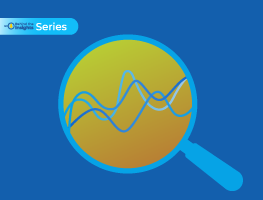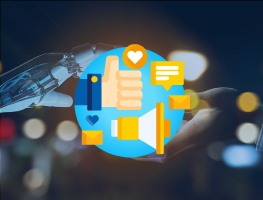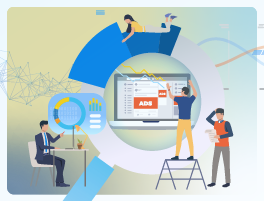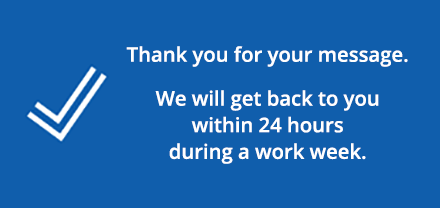Behind the Insights episode 2
You might also like: How AI shapes our product and food choices
This is Behind the Insights, a vodcast series from MetrixLab. In this series, we talk to experts from all over the world to go beyond the data and see what’s really driving today’s hottest topics in insights.
In this episode, join MetrixLab social insights lead Gilbert Saktoe and Anne Klesse, associate professor in marketing at Erasmus University Rotterdam School of Management as they discuss how AI impacts consumer decision making.
Check it out and stay tuned for new episodes every month.
Or if you prefer, read the full transcript below.
Episode transcript:
Gilbert: My name is Gilbert Saktoe, social insights lead at MetrixLab. So this year is actually my 10 year anniversary! It might not seem like that long, but 10 years ago Instagram didn’t exist, and nowadays it’s a super valuable source to get consumer-centric insights. But today I’m delighted to have a conversation with Anne Klesse. She really illuminates my mind with the insightful research that she’s doing at Erasmus University. But I think Anne is much better at introducing herself.
Anne: Wow, what an introduction! I hope I can live up to this. My name is Anne, I’m German but already in the Netherlands for quite some time. I’m an associate professor in marketing at Erasmus University Rotterdam School of Management. You may wonder what does a professor do? In addition to teaching, I am a behavioral scientist. I’m really interested in trying to understand consumer judgement and decision making. I think you can broadly categorize my research into 2 research streams. In the first research stream, I try to understand how we can nudge consumers to make better decisions. So when I say better, you can think about healthier decisions, or more sustainable consumption choices when consumers choose food. Better can also mean saving more money rather than spending it. And the second stream of research focuses on trying to understand how technological advances change our judgement and decision making. Here I’m particularly interested in really prevalent developments such as voice interfaces, so what changes when we actually express our decisions by speaking rather than manually. Or, algorithmic recommendations, or generally, the perceptions that consumers may have towards AI.
Gilbert: That’s super interesting, thanks Anne for the introduction.
Do Siri and Alexa make your food choices unhealthier?
Gilbert: Let’s talk a bit about your research on how technology impacts consumer decision making. So, do Siri and Alexa make your food choices healthier or unhealthier?
Anne: My very short answer for this would be they tend to make your food choices unhealthier. But of course as a scientist I need to explain a little bit why I give this answer.
Think about consumers that make a choice at a vending machine, and they either have to indicate their choice by pushing a button on the machine, or there would be a little microphone attached and they have to speak in that microphone and say which snack they want. Rationally speaking, the way in which they express their decision should not have an impact on what they choose, right? Because there is nothing that changes about these snacks as a consequence of whether I say it or whether I express my decision by button pressing. However, we repeatedly find in our studies that only changing the way in which they express their decision, keeping everything else constant, has an impact.
Speaking seems to prompt consumers to make unhealthier choices because they are more likely to follow their automatic tendency and choose what is appealing to them and what they like. When we face a situation where we choose a snack, most of us at least really like the unhealthy snacks. They are tempting to us. If we just follow this intuition, we most likely go for the unhealthy option. Button pressing, or expressing your decision manually, seems to make you more likely to override this automatic tendency, potentially because you can deliberate a little bit more and you can think about whether you should really choose this candy bar. Now, I need to say that of course there may be other situations in which Siri and Alexa do not necessarily result in an unhealthier choice. If you generally like healthy food, you will not suddenly order something unhealthy just because you speak. But for consumers where they have a tendency to like unhealthy things, expressing a decision by speaking, for instance which pizza to choose, may result in unhealthier choices.
So voice interfaces of course become more and more prevalent, and I was curious to hear whether you actually have any clients that potentially already make use of these voice interfaces, and whether you know if they see any effect on how their consumer make decisions, or whether they potentially think about using such strategies to nudge consumers to make healthier choices?
Gilbert: Yeah, without mentioning any specific clients, I do think this type of research and these findings make a lot of sense for a lot of our FMCG partners, because they are looking into ways on making healthier choices more prevalent for their consumers or their customers.
Who (or what) recommends the products you buy?
Gilbert: Another interesting development in marketing research is the increasing popularity of using AI. Is this also a hot research topic in your department?
Anne: Yeah, so you’re absolutely right. There’s really a lot of research going on about AI and automation in various research fields, and then of course including marketing. At Erasmus University we recently founded a new lab, Erasmus Center of Analytics. And we call this lab “Psychology of AI.” This lab is directed by Stefano Puntoni who has done a lot of research in this area. And it includes several of my colleagues and also myself. The objective here is to engage in research that tries to help us understand the human side of data. So not the technical side, like how is an algorithm configured. But more like what do consumers believe about AI? What do they believe about technological replacement of human labor by AI? What do they think about automation? And in my research in particular, I focus on consumer responses to algorithmic product recommendations. Some time ago, when you wanted to receive a product recommendation, you would receive this from your friend, or from an expert maybe, a travel expert or a movie expert, and nowadays we are constantly bombarded by recommendations that are generated by algorithms. Netflix, Spotify, Bol.com. All of them generate recommendations to you of products, movies, songs that you may find appealing.
What is interesting is that if you talk to companies, they focus to a great extent on the technical side. On trying to understand, how can we improve these algorithms? How can we make them better and better and better at predicting what you like? How can we increase accuracy? And of course this is really important. But it’s only one side of the coin. And a really brilliant PhD student, Phyliss Gai, she did her PhD in our department, she cleverly noticed, you know, that there seems to be very little research on trying to understand how companies should communicate to you as a consumer on what basis this recommendation was generated. And that is research that we have been doing.
If I may give you an example, let’s assume you bought a book on Bol.com. And you were browsing, you looked at a book, you clicked on it, and then there show up a range of recommendations of other books. And Bol.com will give you an explanation for why you see these recommendations. And they may tell you that you see it because this book is similar to what you just looked at. Or they may tell you that you see this because other consumers who looked at the book that you just looked at also looked at this other book. So this is the explanation that comes with your recommendation. And we in our research see that not all explanations are equally good at triggering consumers’ interest in the recommendation. We see that particularly, if consumers get to know that this recommendation is based on what other consumers like, click through rate on that recommendation increases.
Now why is that? Because if you tell me that other consumers also like it, it also tells me that there is some taste matching. And I can use the taste of these other consumers to infer that I most likely will also like this book. Whereas when you only tell me that this book is similar to the book I just looked at, I can only rely on this product attribute. We’ve done many experiments that show that this user-based framing is more effective. What is interesting about this, at least to us, is that these algorithms are so complicated that companies of course need to find a very brief explanation for why you see this. These algorithms take both things into account. They take into account product-related attributes and user-related attributes. So basically, they can pick which of these explanations they want to highlight. We show that in many cases, the user-based explanation is more effective.
Gilbert: So what this means is that companies such as Bol.com or Amazon could really improve the effectiveness of their recommendations simply by changing the way they explain it?
Anne: Correct. That is the essence of our research, it’s a perfect summary. I do need to say that with research, always, there are situations in which this is not the case. For instance, if you have consumers that feel that they really know a lot about a product domain, so if you feel that you know a lot about books, you may think that this taste matching with other consumers is not successful in really matching your very refined taste. So for expert consumers, this user-based framing would not be more effective. At the same time, if I somehow provide you with some information on who the other consumers are on whom I base this recommendation, and these consumers would be very different from you, for instance in terms of age or gender, the user-based framing would also not be more effective.
Gilbert: So this is all super, super relevant and super practical, and also insightful.
Bridging the gap between academics and industry
Gilbert: I always had the idea that academic research really differs from commercial research, because academic research is really strongly focused on theory. So according to you, what do you think are the differences between academic and commercial research? And also what do you think we can learn from each other?
Anne: I think there are many differences, but there are also many similarities. Academics, we definitely have a very strong focus on theory. We try to rely on established theories and constructs. I and many other behavioral scientists focus very often on psychology and theories there, and constructs that have been established. And we rely on them to try to form predictions and explain our findings. Well, that said of course, we try to really study practically relevant phenomena, and challenges that you, companies, practitioners, face and deal with. And by doing so, we can try to have an impact and try to tell you also a little bit why it is important to consider the scientific side and what you can do if you understand why consumers choose the way they do, or why they think about algorithmic product recommendations in the way they do. In our department, we hence constantly try to bridge the gap a little bit between theory and practice. We try to talk to practitioners, just like the two of us are talking now, to understand what are the problems, what are the challenges that they face. And that really helps us to develop these practically relevant research questions and guarantee that what we study has some implications and can potentially answer questions that are relevant.
Gilbert: Thank you so much Anne. Thank you for your time and your interesting insights into your current research and future plans.
Anne: Thank you very much for inviting me, I think it was really great and as I said, I really deeply feel that we should collaborate and speak to each other much more often because I definitely see it as a win-win for both parties. So thanks a lot for reaching out and for initiating such a series, I think that’s great.
Gilbert: Perfect, thanks Anne.









